LPRNet: License Plate Recognition via Deep Neural Networks
Sergey Zherzdev
ex-Intel∗
IOTG Computer Vision Group
Alexey Gruzdev
Intel
IOTG Computer Vision Group
sergeyzherzdev@gmail.com
alexey.gruzdev@intel.com
8
1
0
2
n
u
J
7
2
]
V
C
.
s
c
[
1
v
7
4
4
0
1
.
6
0
8
1
:
v
i
X
r
a
Abstract
This paper proposes LPRNet - end-to-end method for
Automatic License Plate Recognition without preliminary
character segmentation. Our approach is inspired by re-
cent breakthroughs in Deep Neural Networks, and works in
real-time with recognition accuracy up to 95% for Chinese
license plates: 3 ms/plate on nVIDIA R GeForceTMGTX
1080 and 1.3 ms/plate on Intel R CoreTMi7-6700K CPU.
LPRNet consists of the lightweight Convolutional Neu-
ral Network, so it can be trained in end-to-end way. To the
best of our knowledge, LPRNet is the first real-time License
Plate Recognition system that does not use RNNs. As a re-
sult, the LPRNet algorithm may be used to create embedded
solutions for LPR that feature high level accuracy even on
challenging Chinese license plates.
1. Introduction
Automatic License Plate Recognition is a challenging
and important task which is used in traffic management,
digital security surveillance, vehicle recognition, parking
management of big cities. This task is a complex prob-
lem due to many factors which include but are not limited
to: blurry images, poor lighting conditions, variability of
license plates numbers (including special characters e.g. lo-
gograms for China, Japan), physical impact (deformations),
weather conditions (see some examples in Fig. 1).
The robust Automatic License Plate Recognition system
needs to cope with a variety of environments while main-
taining a high level of accuracy, in other words this system
should work well in natural conditions.
This paper tackles the License Plate Recognition prob-
lem and introduces the LPRNet algorithm, which is de-
signed to work without pre-segmentation and consequent
recognition of characters. In the present paper, we do not
consider License Plate Detection problem, however, for our
particular case it can be done through LBP-cascade.
0This work was done when Sergey was an Intel employee
LPRNet is based on Deep Convolutional Neural Net-
work. Recent studies proved effectiveness and superiority
of Convolutional Neural Networks in many Computer Vi-
sion tasks such as image classification, object detection and
semantic segmentation. However, running most of them on
embedded devices still remains a challenging problem.
LPRNet is a very efficient neural network, which takes
only 0.34 GFLops to make a single forward pass. Also, our
model is real-time on Intel Core i7-6700K SkyLake CPU
with high accuracy on challenging Chinese License plates
and can be trained end-to-end. Moreover, LPRNet can be
partially ported on FPGA, which can free up CPU power
for other parts of the pipeline. Our main contributions can
be summarized as follows:
• LPRNet is a real-time framework for high-quality
license plate recognition supporting template and
character independent variable-length license plates,
performing LPR without character pre-segmentation,
trainable end-to-end from scratch for different national
license plates.
• LPRNet is the first real-time approach that does not use
Recurrent Neural Networks and is lightweight enough
to run on variety of platforms, including embedded de-
vices.
• Application of LPRNet
to real
traffic surveillance
video shows that our approach is robust enough to
handle difficult cases, such as perspective and camera-
dependent distortions, hard lighting conditions, change
of viewpoint, etc.
The rest of the paper is organized as follows. Section 2
describes the related work. In sec. 3 we review the details
of the LPRNet model. Sec. 4 reports the results on Chi-
nese License Plates and includes an ablation study of our
algorithm. We summarize and conclude our work in sec. 5.
2. Related Work
In the earlier works on general LP recognition, such as
[1] the pipeline consist of character segmentation and char-
1
�
Figure 1. Example of LPRNet recognitions
acter classification stages:
• Character segmentation typically uses different hand-
crafted algorithms, combining projections, connectiv-
ity and contour based image components.
It takes a
binary image or intermediate representation as input
so character segmentation quality is highly affected by
the input image noise, low resolution, blur or deforma-
tions.
• Character classification typically utilizes one of the op-
tical character recognition (OCR) methods - adopted
for LP character set.
Since classification follows the character segmentation,
end-to-end recognition quality depends heavily on the ap-
plied segmentation method.
In order to solve the prob-
lem of character segmentation there were proposed end-
to-end Convolutional Neural Networks (CNNs) based so-
lutions taking the whole LP image as input and producing
the output character sequence.
The segmentation-free model in [2] is based on variable
length sequence decoding driven by connectionist temporal
classification (CTC) loss [3, 4]. It uses hand-crafted fea-
tures LBP built on a binarized image as CNN input to pro-
duce character classes probabilities. Applied to all input
image positions via the sliding window approach it makes
the input sequence for the bi-directional Long-Short Term
Memory (LSTM) [5] based decoder. Since the decoder out-
put and target character sequence lengths are different, CTC
loss is used for the pre-segmentation free end-to-end train-
ing.
The model in [6] mostly follows the approach described
in [2] except that the sliding window method was replaced
by CNN output spatial splitting to the RNN input sequence
(”sliding window” over feature map instead of input).
In contrast [7] uses the CNN-based model for the whole
LP image to produce the global LP embedding which is de-
coded to a 11-character-length sequence via 11 fully con-
nected model heads. Each of the heads is trained to clas-
sify the i-th target string character (which is assumed to be
padded to the predefined fixed length), so the whole recog-
nition can be done in a single feed-forward pass. It also uti-
lizes the Spatial Transformer Network (STN) [8] to reduce
the effect of input image deformations.
The algorithm in [9] makes an attempt to solve both li-
cense plate detection and license plate recognition problems
by single Deep Neural Network.
Recent work [10] tries to exploit synthetic data gener-
ation approach based on Generative Adversarial Networks
[11] for data generation procedure to obtain large represen-
tative license plates dataset.
In our approach, we avoided using hand-crafted features
over a binarized image - instead we used raw RGB pixels
as CNN input. The LSTM-based sequence decoder work-
ing on outputs of a sliding window CNN was replaced with
a fully convolutional model which output is interpreted as
character probabilities sequence for CTC loss training and
greedy or prefix search string inference. For better perfor-
mance the pre-decoder intermediate feature map was aug-
mented by the global context embedding as described in
[12]. Also the backbone CNN model was reduced sig-
nificantly using the low computation cost basic building
block inspired by SqueezeNet Fire Blocks [13] and Incep-
tion Blocks of [14, 15, 16]. Batch Normalization [17] and
Dropout [18] techniques were used for regularization.
LP image input size affects both the computational cost
and the recognition quality [19], as a result there is a trade-
off between using high [6] or moderate [7, 2] resolution.
3. LPRNet
3.1. Design architecture
In this section we describe our LPRNet network archi-
tecture design in detail.
In recent studies tend to use parts of the powerful clas-
sification networks such as VGG, ResNet or GoogLeNet
as ‘backbone‘ for their tasks by applying transfer learning
techniques. However, this is not the best option for building
fast and lightweight networks, so in our case we redesigned
�
main ‘backbone‘ network applying recently discovered ar-
chitecture tricks.
The basic building block of our CNN model backbone
(Table 2) was inspired by SqueezeNet Fire Blocks [13] and
Inception Blocks of [14, 15, 16]. We also followed the re-
search best practices and used Batch Normalization [17]
and ReLU activation after each convolution operation.
In a nutshell our design consists of:
• location network with Spatial Transformer Layer [8]
(optional)
• light-weight convolutional neural network (backbone)
• per-position character classification head
• character probabilities for further sequence decoding
• post-filtering procedure
First, the input image is preprocessed by the Spatial
Transformer Layer, as proposed in [8]. This step is optional
but allows to explore how one can transform the input image
to have better characteristics for recognition. The original
LocNet (see the Table 1) architecture was used to estimate
optimal transformation parameters.
Layer Type
Input
AvgPooling
Convolution
Concatenation
Dropout
FC
FC
Parameters
94x24 pixels RGB image
#32 3x3 stride 2
#32 5x5 stride 3
—
#32 5x5 stride 5
channel-wise
0.5 ratio
#32 with TanH activation
#6 with scaled TanH activation
Table 1. LocNet architecture
Layer Type
Input
Convolution
Convolution
Convolution
Convolution
Output
Parameters/Dimensions
Cin × H × W feature map
# Cout/4 1x1 stride 1
# Cout/4 3x1 strideh=1, padh=1
# Cout/4 1x3 stridew=1, padw=1
# Cout 1x1 stride 1
Cout × H × W feature map
Table 2. Small Basic Block
The backbone network architecture is described in Ta-
ble 3. The backbone takes a raw RGB image as input and
calculates spatially distributed rich features. Wide convolu-
tion (with 1 × 13 kernel) utilizes the local character context
instead of using LSTM-based RNN. The backbone subnet-
work output can be interpreted as a sequence of character
probabilities whose length corresponds to the input image
pixel width. Since the decoder output and the target char-
acter sequence lengths are of different length, we apply the
method of CTC loss [20] - for segmentation-free end-to-end
training. CTC loss is a well-known approach for situations
where input and output sequences are misaligned and have
variable lengths. Moreover, CTC provides an efficient way
to go from probabilities at each time step to the probabil-
ity of an output sequence. More detailed explanation about
CTC loss can be found in .
Layer Type
Input
Convolution
MaxPooling
Small basic block
MaxPooling
Small basic block
Small basic block
MaxPooling
Dropout
Convolution
Dropout
Convolution
Parameters
94x24 pixels RGB image
#64 3x3 stride 1
#64 3x3 stride 1
#128 3x3 stride 1
#64 3x3 stride (2, 1)
#256 3x3 stride 1
#256 3x3 stride 1
#64 3x3 stride (2, 1)
0.5 ratio
#256 4x1 stride 1
0.5 ratio
# class number 1x13 stride 1
Table 3. Back-bone Network Architecture
To further improve performance, the pre-decoder inter-
mediate feature map was augmented with the global context
embedding as in [12]. It is computed via a fully-connected
layer over backbone output, tiled to the desired size and
concatenated with backbone output. In order to adjust the
depth of feature map to the character class number addi-
tional 1 × 1 convolution is applied.
For the decoding procedure at the inference stage we
considered 2 options: greedy search and beam search.
While greedy search takes the maximum of class proba-
bilities in each position, beam search maximizes the total
probability of the output sequence [3, 4].
For post-filtering we use a task-oriented language model
implemented as a set of the target country LP templates.
Note that post-filtering is applied together with Beam
Search. The post-filtering procedure gets top-N most prob-
able sequences found by beam search and returns the first
one that matches the set of predefined templates which de-
pends on country LP regulations.
3.2. Training details
All training experiments were done with the help of Ten-
sorFlow [21].
We train our model with ’Adam’ optimizer using batch
size of 32, initial learning rate 0.001 and gradient noise
scale of 0.001. We drop the learning rate once after every
100k iterations by a factor of 10 and train our network for
250k iterations in total.
�
In our experiments we use data augmentation by random
affine transformations, e.g. rotation, scaling and shift.
It is worth mentioning, that application of LocNet from
the beginning of training leads to degradation of results, be-
cause LocNet cannot get reasonable gradients from a recog-
nizer which is typically too weak for the first few iterations.
So, in our experiments, we turn LocNet on only after 5k
iterations.
All other hyper-parameters were chosen by cross-
validation over the target dataset.
4. Results of the Experiments
The LPRNet baseline network, from which we started
our experiments with different architectures, was inspired
by [2]. It’s mainly based on Inception blocks followed by
a bidirectional LSTM (biLSTM) decoder and trained with
CTC loss. We first performed some experiments aimed at
replacing biLSTM with biGRU cells, but we did not observe
any clear benefits of using biGRU over biLSTM.
Then, we focused on eliminating of the complicated biL-
STM decoder, because most modern embedded devices still
do not have sufficient compute and memory to efficiently
execute biLSTM. Importantly, our LSTM is applied to a
spatial sequence rather than to a temporal one. Thus all
LSTM inputs are known upfront both at the training stage
as well as at the inference stage. Therefore we believe that
RNN can be replaced by spatial convolutions without a sig-
nificant drop in accuracy. The RNN-less model with some
backbone modifications is referenced as LPRNet basic and
it was described in details in sec. 3.
To improve runtime performance we also modified LPR-
Net basic by using 2 × 2 strides for all pooling layers. This
modification (the LPRNet reduced model) reduces the size
of intermediate feature maps and total inference computa-
tional cost significantly (see GFLOPs column of the Table
4).
4.1. Chinese License Plates dataset
We tested our approach on a private dataset containing
various images of Chinese license plates collected from
different security and surveillance cameras. This dataset
was first run through the LPB-based detector to get bound-
ing boxes for each license plate. Then, all license plates
were manually labeled. In total, the dataset contains 11696
cropped license plate images, which are split as 9:1 into
training and validation subsets respectively.
Automatically cropped license plate images were used
for training to make the network more robust to detection ar-
tifacts because in some cases plates are cropped with some
background around edges, while in other cases they are
cropped too close to edges with no background at all or
event with some parts of the license plate missing.
Table 4 shows recognition accuracies achieved by differ-
ent models.
Method
LPRNet baseline
LPRNet basic
LPRNet reduced
Recognition Accuracy, % GFLOPs
94.1
95.0
94.0
0.71
0.34
0.163
Table 4. Results on Chinese License Plates.
4.2. Ablation study
It is of vital importance to conduct the ablation study to
identify correlation between various enhancements and re-
spective accuracy/performance improvements. This helps
other researchers adopt ideas from the paper and reuse most
promising architecture approaches. Table 5 shows a sum-
mary of architecture approaches and their impact on accu-
racy.
LPRNet
�
Approach
Global context
� � � �
Data augm.
� � � �
STN-alignment
� � �
Beam Search
� �
Post-filtering
�
Accuracy, % 53.4 58.6 59.0 62.95 91.6 94.4 94.4 95.0
� � �
� �
�
�
Table 5. Effects of various tricks on LPRNet quality.
As one can see, the largest accuracy gain (36%) was
achieved using the global context. The data augmentation
techniques also help to improve accuracy significantly (by
28.6%). Without using data augmentation and the global
context we could not train the model from scratch.
The STN-based alignment subnetwork provides notice-
able improvement of 2.8-5.2%. Beam Search with post-
filtering further improves recognition accuracy by 0.4-
0.6%.
4.3. Performance analysis
The LPRNet reduced model was ported to various hard-
ware platforms including CPU, GPU and FPGA. The results
are presented in the Table 6.
Target platform
GPU + cuDNN
CPU (using Caffe [22])
CPU + FPGA (using DLA [23])
CPU (using IE from Intel OpenVINO [24])
Table 6. Performance analysis.
1 LP processing time
3 ms
11-15 ms
4 ms1
1.3 ms
1The LPRNet reduced model was used
�
Here GPU is nVIDIA R GeForceTM1080, CPU is Intel R
CoreTMi7-6700K SkyLake, FPGA is Intel R ArriaTM10 and
IE is for Inference Engine from Intel R OpenVINO.
5. Conclusions and Future Work
In this work, we have shown that for License Plate
Recognition one can utilize pretty small convolutional neu-
ral networks. LPRNet model was introduced, which can be
used for challenging data, achieving up to 95% recognition
accuracy. Architecture details, its motivation and the abla-
tion study was conducted.
We showed that LPRNet can perform inference in real-
time on a variety of hardware architectures including CPU,
GPU and FPGA. We have no doubt that LPRNet could at-
tain real-time performance even on more specialized em-
bedded low-power devices.
The LPRNet can likely be compressed using modern
pruning and quantization techniques, which would poten-
tially help to reduce the computational complexity even fur-
ther.
As a future direction of research, LPRNet work can be
extended by merging CNN-based detection part into our al-
gorithm, so that both detection and recognition tasks will
be evaluated as a single network in order to outperform the
LBP-based cascaded detector quality.
6. Acknowledgements
We would like to thank Intel R IOTG Computer Vision
(ICV) Optimization team for porting the model to the Intel
Inference Engine of OpenVINO, as well as Intel R IOTG
Computer Vision (ICV) OVX FPGA team for porting the
model to the DLA. We also would like to thank Intel R
PSG DLA and Intel R Computer Vision SDK teams for their
tools and support.
References
[1] C. N. E. Anagnostopoulos, I. E. Anagnostopoulos, I. D.
Psoroulas, V. Loumos, and E. Kayafas, “License Plate
Recognition From Still Images and Video Sequences: A Sur-
vey,” IEEE Transactions on Intelligent Transportation Sys-
tems, vol. 9, no. 3, pp. 377–391, Sep. 2008. 1
[2] H. Li and C. Shen, “Reading Car License Plates Us-
ing Deep Convolutional Neural Networks and LSTMs,”
arXiv:1601.05610 [cs], Jan. 2016, arXiv: 1601.05610. 2,
4
[3] A. Graves, Supervised Sequence Labelling with Recurrent
Heidelberg ; New York:
Neural Networks, 2012th ed.
Springer, Feb. 2012. 2, 3
[4] A. Graves, S. Fernndez, F. Gomez, and J. Schmidhu-
ber, “Connectionist temporal classification: labelling unseg-
mented sequence data with recurrent neural networks,” in
Proceedings of the 23rd international conference on Ma-
chine learning. ACM, 2006, pp. 369–376. 2, 3
[5] S. Hochreiter and J. Schmidhuber, “Long Short-Term Mem-
ory,” Neural Computation, vol. 9, no. 8, pp. 1735–1780, Nov.
1997. 2
[6] T. K. Cheang, Y. S. Chong, and Y. H. Tay, “Segmentation-
free Vehicle License Plate Recognition using ConvNet-
RNN,”
arXiv:
1701.06439. 2
arXiv:1701.06439
2017,
[cs],
Jan.
[7] V. Jain, Z. Sasindran, A. Rajagopal, S. Biswas, H. S. Bharad-
waj, and K. R. Ramakrishnan, “Deep Automatic License
Plate Recognition System,” in Proceedings of the Tenth In-
dian Conference on Computer Vision, Graphics and Image
Processing, ser. ICVGIP ’16. New York, NY, USA: ACM,
2016, pp. 6:1–6:8. 2
[8] M.
Jaderberg, K. Simonyan, A. Zisserman,
and
K. Kavukcuoglu,
“Spatial Transformer Networks,”
arXiv:1506.02025 [cs], Jun. 2015, arXiv: 1506.02025.
2, 3
[9] H. Li, P. Wang, and C. Shen, “Towards End-to-End Car Li-
cense Plates Detection and Recognition with Deep Neural
Networks,” ArXiv e-prints, Sep. 2017. 2
[10] X. Wang, Z. Man, M. You, and C. Shen, “Adversarial Gener-
ation of Training Examples: Applications to Moving Vehicle
License Plate Recognition,” ArXiv e-prints, Jul. 2017. 2
[11] I. J. Goodfellow, J. Pouget-Abadie, M. Mirza, B. Xu,
D. Warde-Farley, S. Ozair, A. Courville, and Y. Bengio,
“Generative Adversarial Networks,” ArXiv e-prints, Jun.
2014. 2
[12] W. Liu, A. Rabinovich, and A. C. Berg, “ParseNet: Look-
ing Wider to See Better,” arXiv:1506.04579 [cs], Jun. 2015,
arXiv: 1506.04579. 2, 3
[13] F. N. Iandola, S. Han, M. W. Moskewicz, K. Ashraf, W. J.
Dally, and K. Keutzer, “SqueezeNet: AlexNet-level accu-
racy with 50x fewer parameters and <0.5mb model size,”
arXiv:1602.07360 [cs], Feb. 2016, arXiv: 1602.07360. 2, 3
Ioffe, V. Vanhoucke, and A. Alemi,
“Inception-v4, Inception-ResNet and the Impact of Resid-
ual Connections on Learning,” arXiv:1602.07261 [cs], Feb.
2016, arXiv: 1602.07261. 2, 3
[14] C. Szegedy, S.
[15] C. Szegedy, W. Liu, Y. Jia, P. Sermanet, S. Reed,
D. Anguelov, D. Erhan, V. Vanhoucke, and A. Rabinovich,
“Going Deeper with Convolutions,” arXiv:1409.4842 [cs],
Sep. 2014, arXiv: 1409.4842. 2, 3
[16] C. Szegedy, V. Vanhoucke, S. Ioffe, J. Shlens, and Z. Wo-
jna, “Rethinking the Inception Architecture for Com-
puter Vision,” arXiv:1512.00567 [cs], Dec. 2015, arXiv:
1512.00567. 2, 3
[17] S. Ioffe and C. Szegedy, “Batch Normalization: Accel-
erating Deep Network Training by Reducing Internal Co-
variate Shift,” arXiv:1502.03167 [cs], Feb. 2015, arXiv:
1502.03167. 2, 3
[18] N. Srivastava, G. Hinton, A. Krizhevsky, I. Sutskever, and
R. Salakhutdinov, “Dropout: A Simple Way to Prevent
Neural Networks from Overfitting,” J. Mach. Learn. Res.,
vol. 15, no. 1, pp. 1929–1958, Jan. 2014. 2
�
[19] S. Agarwal, D. Tran, L. Torresani, and H. Farid, “Decipher-
ing Severely Degraded License Plates,” San Francisco, CA,
2017. 2
[20] A. Hannun, “Sequence modeling with ctc,” Distill, 2017,
https://distill.pub/2017/ctc. 3
[21] M. Abadi, A. Agarwal, P. Barham, E. Brevdo, Z. Chen,
C. Citro, G. S. Corrado, A. Davis, J. Dean, M. Devin, S. Ghe-
mawat, I. Goodfellow, A. Harp, G. Irving, M. Isard, Y. Jia,
R. Jozefowicz, L. Kaiser, M. Kudlur, J. Levenberg, D. Mane,
R. Monga, S. Moore, D. Murray, C. Olah, M. Schuster,
J. Shlens, B. Steiner, I. Sutskever, K. Talwar, P. Tucker,
V. Vanhoucke, V. Vasudevan, F. Viegas, O. Vinyals, P. War-
den, M. Wattenberg, M. Wicke, Y. Yu, and X. Zheng, “Ten-
sorFlow: Large-Scale Machine Learning on Heterogeneous
Distributed Systems,” arXiv:1603.04467 [cs], Mar. 2016,
arXiv: 1603.04467. 3
[22] Y. Jia, E. Shelhamer, J. Donahue, S. Karayev, J. Long,
R. Girshick, S. Guadarrama, and T. Darrell, “Caffe: Con-
volutional architecture for fast feature embedding,” arXiv
preprint arXiv:1408.5093, 2014. 4
[23] U. Aydonat, S. O’Connell, D. Capalija, A. C. Ling, and
G. R. Chiu, “An OpenCL(TM) Deep Learning Accelera-
tor on Arria 10,” arXiv:1701.03534 [cs], Jan. 2017, arXiv:
1701.03534. 4
[24] “Intel OpenVINO Toolkit
line]. Available:
OpenVINO-InferEngine 4
|
[On-
https://software.intel.com/en-us/articles/
Intel Software.”
�
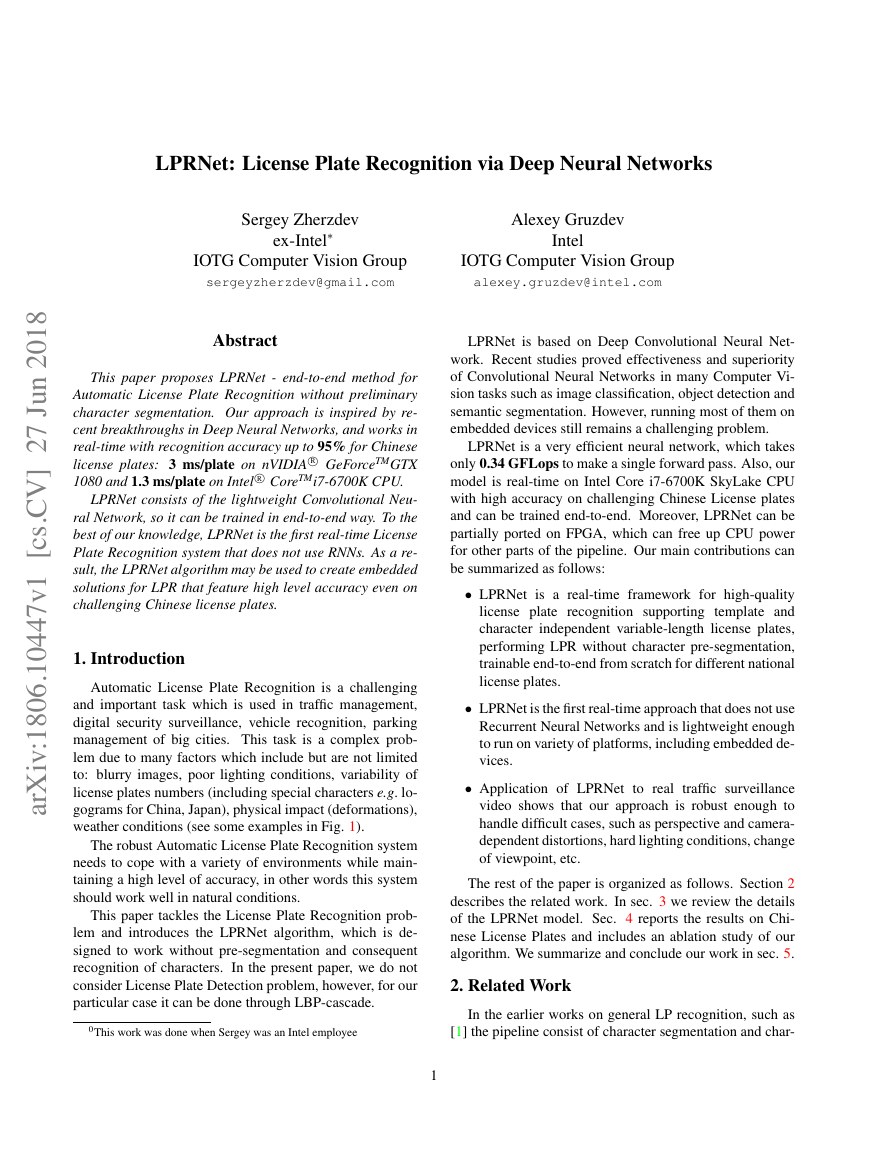
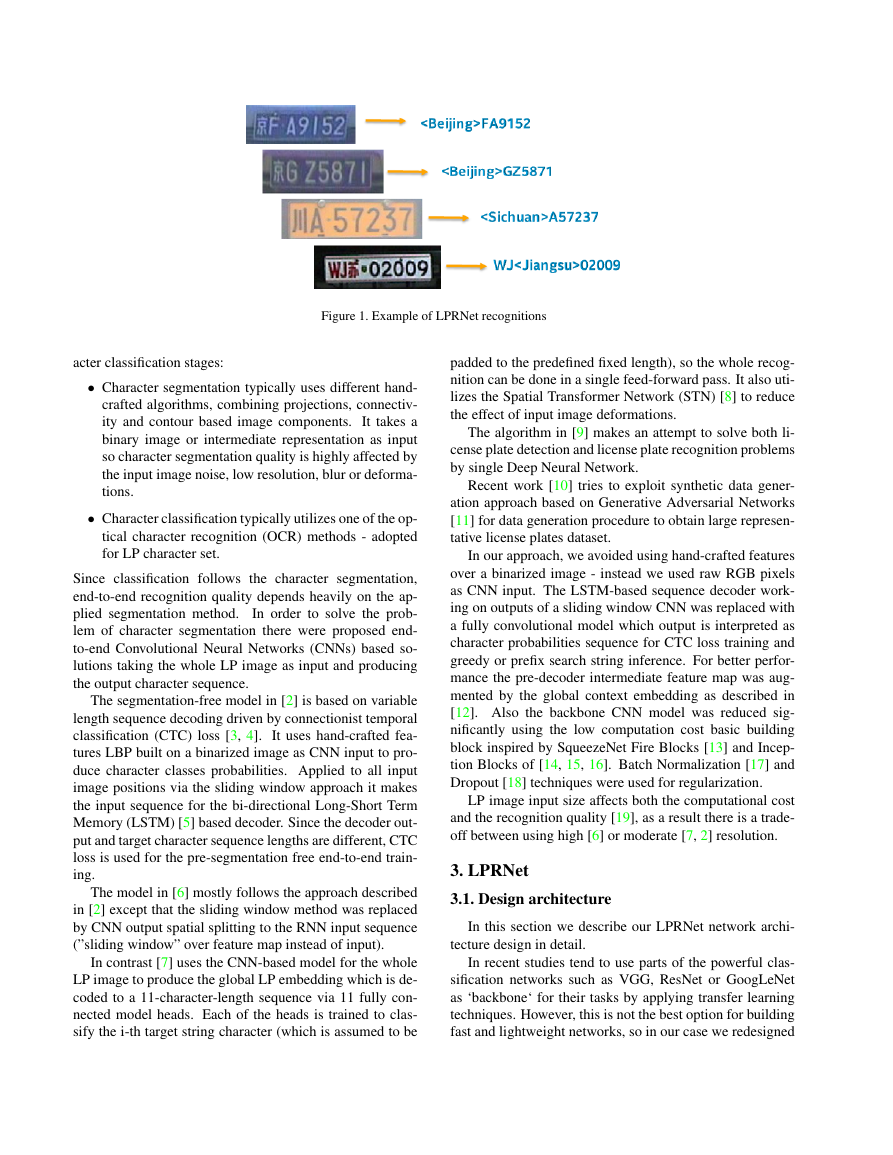
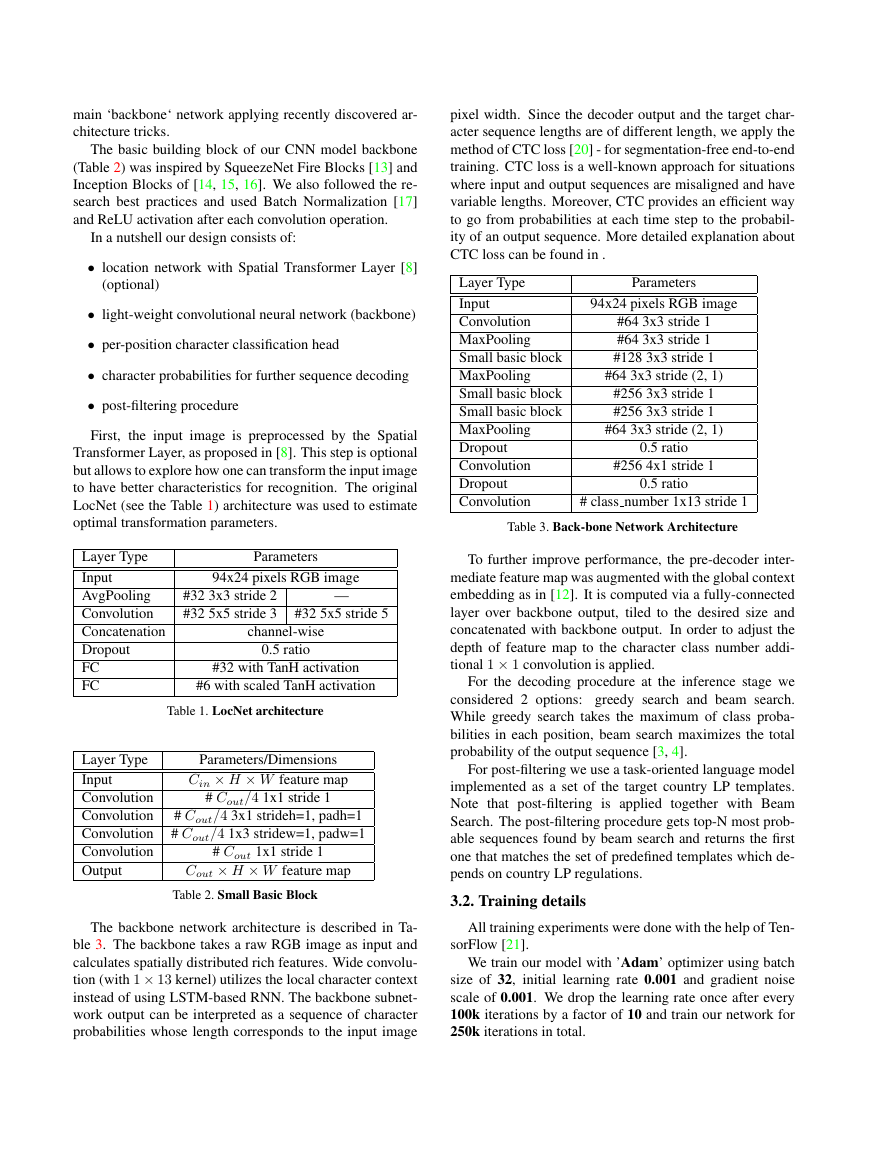
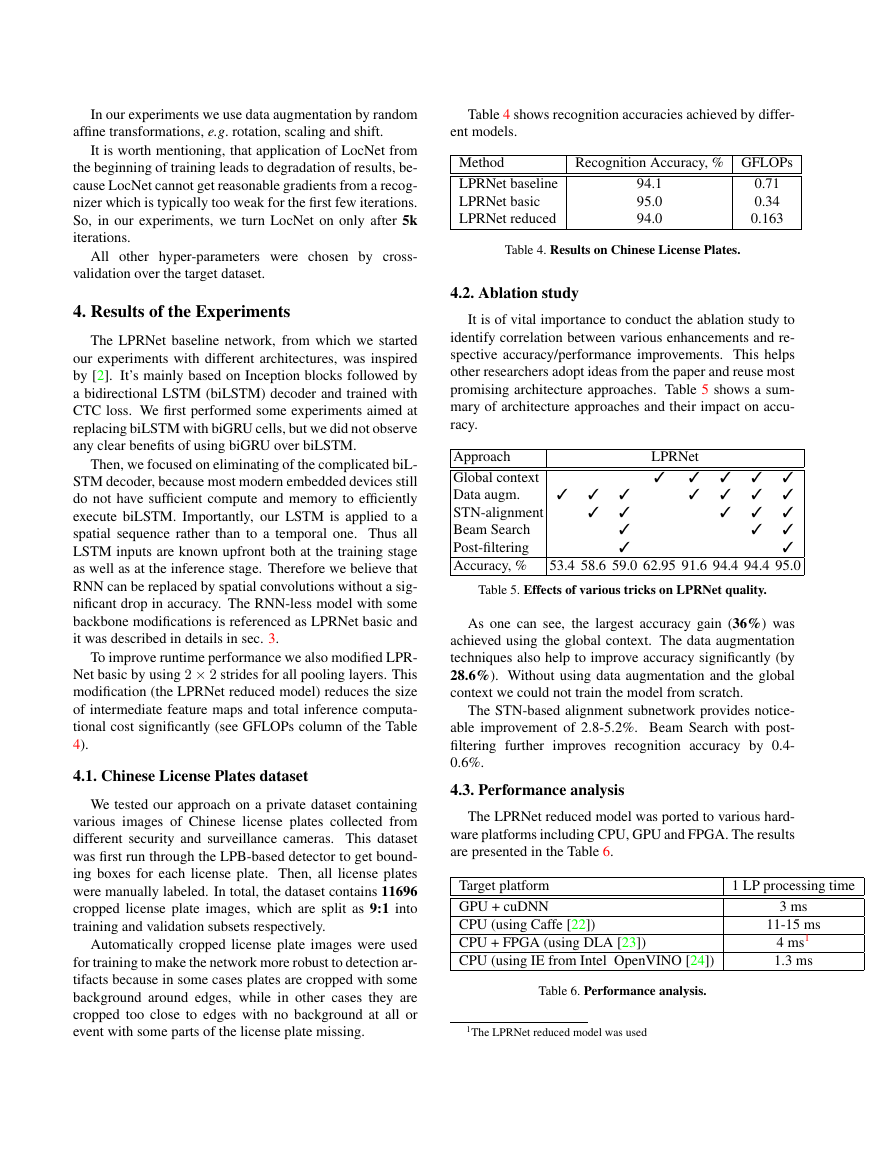
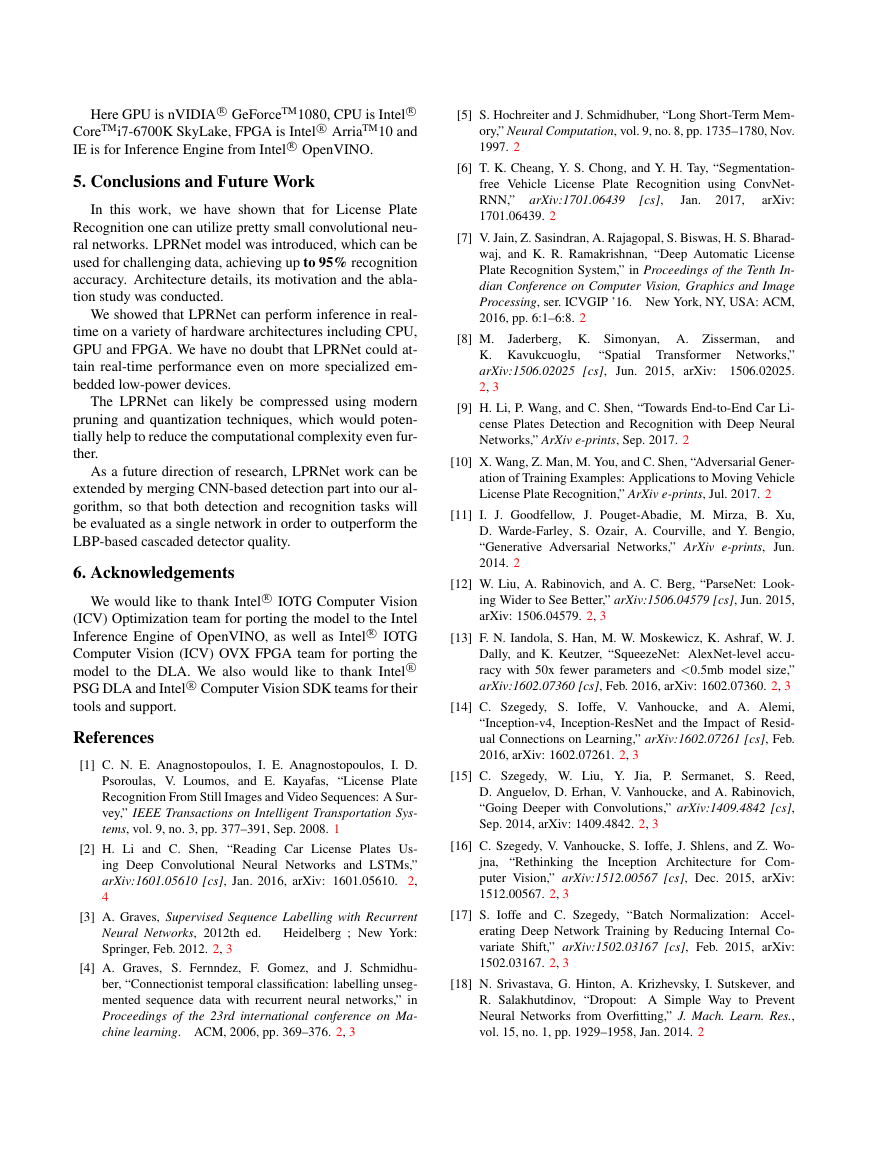
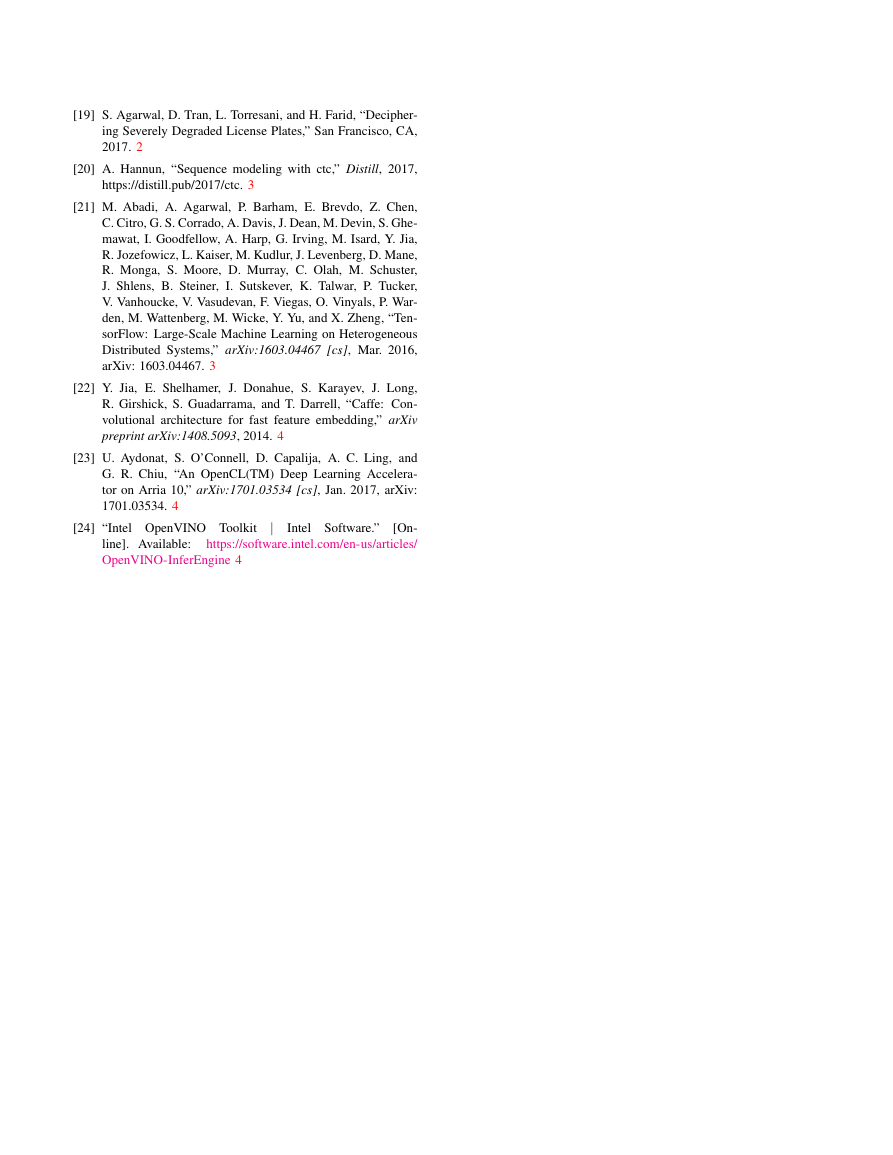






 2023年江西萍乡中考道德与法治真题及答案.doc
2023年江西萍乡中考道德与法治真题及答案.doc 2012年重庆南川中考生物真题及答案.doc
2012年重庆南川中考生物真题及答案.doc 2013年江西师范大学地理学综合及文艺理论基础考研真题.doc
2013年江西师范大学地理学综合及文艺理论基础考研真题.doc 2020年四川甘孜小升初语文真题及答案I卷.doc
2020年四川甘孜小升初语文真题及答案I卷.doc 2020年注册岩土工程师专业基础考试真题及答案.doc
2020年注册岩土工程师专业基础考试真题及答案.doc 2023-2024学年福建省厦门市九年级上学期数学月考试题及答案.doc
2023-2024学年福建省厦门市九年级上学期数学月考试题及答案.doc 2021-2022学年辽宁省沈阳市大东区九年级上学期语文期末试题及答案.doc
2021-2022学年辽宁省沈阳市大东区九年级上学期语文期末试题及答案.doc 2022-2023学年北京东城区初三第一学期物理期末试卷及答案.doc
2022-2023学年北京东城区初三第一学期物理期末试卷及答案.doc 2018上半年江西教师资格初中地理学科知识与教学能力真题及答案.doc
2018上半年江西教师资格初中地理学科知识与教学能力真题及答案.doc 2012年河北国家公务员申论考试真题及答案-省级.doc
2012年河北国家公务员申论考试真题及答案-省级.doc 2020-2021学年江苏省扬州市江都区邵樊片九年级上学期数学第一次质量检测试题及答案.doc
2020-2021学年江苏省扬州市江都区邵樊片九年级上学期数学第一次质量检测试题及答案.doc 2022下半年黑龙江教师资格证中学综合素质真题及答案.doc
2022下半年黑龙江教师资格证中学综合素质真题及答案.doc